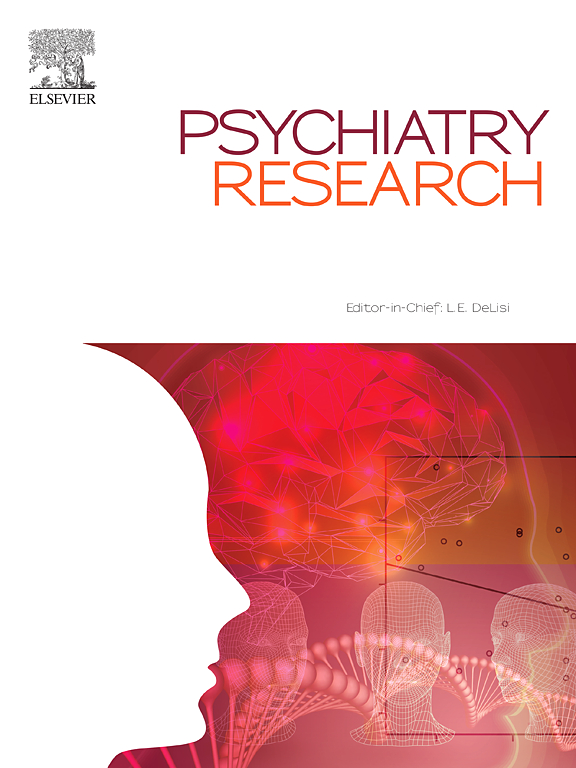Clinical, cognitive, creativity and cultural measures in dissociative identity disorder: A controlled study
IF 4.2
2区 医学
Q1 PSYCHIATRY
引用次数: 0
Abstract
Background
Dissociative identity disorder (DID) is associated with severe clinical and cognitive debilitating psychopathology. Additionally, it is often thought that creativity and cultural differences contribute to DID's symptomatology. Thus, the present study aimed to expand previous empirical data by investigating differences in clinical, cognitive, creativity and cultural measures between two distinct samples in order to gain a better insight into this disorder.
Methods
Clinical, cognitive and creativity self-reported measures of 97 participants from The Netherlands and Switzerland were compared between two groups: 32 participants with DID and a control group of 65 controls.
Results
Participants with DID scored significantly higher than the control group on the majority of clinical and creativity scales, but not on the cognitive measures.
Conclusion
Outcomes indicate heightened dissociative, depressive and anxiety symptomatology, as well as increased traumatic experiences, parental affectionate control and sleep disturbances in individuals with DID as compared to controls. These findings replicate and corroborate previous empirical findings and support the Trauma Model of DID. No cultural differences were observed between Dutch and Swiss individuals with DID.
求助全文
约1分钟内获得全文
求助全文
来源期刊

Psychiatry Research
医学-精神病学
CiteScore
17.40
自引率
1.80%
发文量
527
审稿时长
57 days
期刊介绍:
Psychiatry Research offers swift publication of comprehensive research reports and reviews within the field of psychiatry.
The scope of the journal encompasses:
Biochemical, physiological, neuroanatomic, genetic, neurocognitive, and psychosocial determinants of psychiatric disorders.
Diagnostic assessments of psychiatric disorders.
Evaluations that pursue hypotheses about the cause or causes of psychiatric diseases.
Evaluations of pharmacologic and non-pharmacologic psychiatric treatments.
Basic neuroscience studies related to animal or neurochemical models for psychiatric disorders.
Methodological advances, such as instrumentation, clinical scales, and assays directly applicable to psychiatric research.
 求助内容:
求助内容: 应助结果提醒方式:
应助结果提醒方式:


